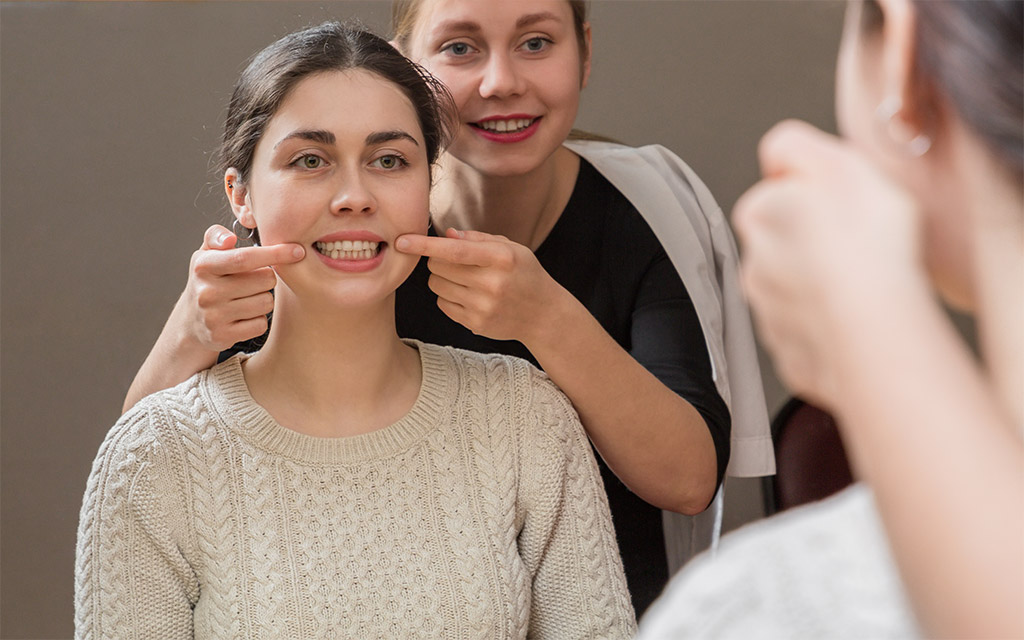Myofunctional Therapy

Myofunctional Therapy introduces exercises…
related to tongue placement, breathing, speaking, chewing and swallowing, help to address a wide range of health problems and conditions including:
- Sleep apnea
- Upper Airway Resistance Syndrome
- Sleep disturbed breathing
- Tongue-tie
- TMJ pain
- Orthodontic and surgical relapse
- Craniofacial growth and appearance concerns
- Headaches and other facial and neck pain and tension
- Postural issues
The Four Goals of Myofunctional Therapy are:
- Nasal breathing
- Lip seal
- Proper tongue posture
- Correct swallowing pattern

Not just for kids…
Orofacial myofunctional therapy is also appropriate for adults. In many instances, a myofunctional disorder develops in response to late jaw growth, worsening of a malocclusion over time, or other reasons such as tooth loss. Therapy for adult patients is typically efficient. Adults of all ages are capable of achieving success in treatment.
Myofunctional therapy may be an attractive alternative treatment for sleep apnea. It is non-invasive, inexpensive, and has no major risks. For example, you may be able to avoid the use of continuous positive airway pressure (CPAP) or even surgery. In addition, the therapy has been used in other conditions.


How does a typical exam work?
This is a list of all the things I look at during a myofunctional therapy examination:
- Tonsils and adenoids
- Mouth breathing vs. nasal breathing
- Where the tongue rests in the mouth
- Tongue-tie
- Orthodontic treatment
- Speech and articulation
- Jaw pain and dysfunction
- Head, neck, and facial pain
- Snoring and sleep apnea
- Facial structure
- Habits such as thumb and finger sucking
I teach my patients exercises that relate to tongue placement, breathing, speaking, chewing, and swallowing.
I want the tongue to rest in the right place and the mouth to stay closed. When these two simple things happen, troublesome symptoms disappear and the big picture problems around braces, speech, jaw pain, and sleep apnea become much easier to treat.
For success using this therapy, consistent exercise every day is necessary until the patient has fixed their improper muscle pattern.
It takes a commitment by the patient, family ~ and some time. Treatment usually consists of a regular program of exercises over a 6 – 12 month period, although treatment length may vary depending on individual needs.
